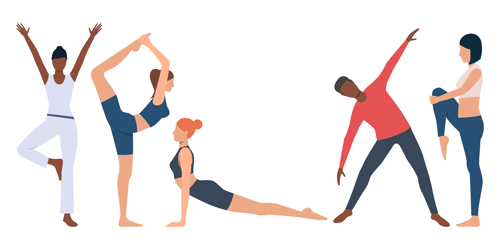Blog
ONLINE TRAINING
EXPERT TRAINERS
STUDY AT YOUR PACE
7 DAY SUPPORT

10 Best Warm Up Exercises for Working Out
Prior to starting an exercise session, it is important to carefully warm up your body. The purpose of warm up exercises is to reduce the risk of sustaining an injury. A warm-up of between 5-10 minutes should ensure that all systems of the body are ready for the ‘real’ work to begin!
Starting with a light-to-moderate level of intensity will allow the cardiorespiratory system, aka heart and lungs, time to adapt to the exercise demands. This includes an increase in heart rate, which will allow for greater delivery of blood to the performing muscles.
Another important consideration is the increase in muscle temperature, which as a result influences substrate delivery to working muscles to allow energy production. The temperature will continue to increase to match the intensity that will follow in the main workout. Therefore, if the warm-up doesn’t drain too much energy, it will prepare the body for the training session and minimize the risk of injury.
Here are 10 warm up exercises for you to start implementing at the start of your sessions:
- The A-Skip
Step forward with right leg, and as right foot touches floor, push up onto ball of foot with a hop, bring left knee up to hip height and swing right arm forward. Lower left leg and repeat, alternating legs as you step-hop for 30 seconds. - Rotating Lunge
Stand with feet hip-width apart, holding your arms fully extended in front of you at chest height with your hands together. Take a giant step forward with left leg, like you are moving into the lunge position. Hold, and rotate torso to left for 2 seconds. Rotate to centre and then stand back up. Repeat, alternating legs and rotation direction. This assists in building balance, stability and core strength. - T-spine Rotation
Lie face up with arms out to sides. Raise right leg so it’s perpendicular to floor. Lower right leg across torso and touch floor on left side with right foot. Return to start; do 8 to 10 reps. Repeat with left leg. This movement warms inner and outer thighs, as well as lower-back muscles and strengthens the core. - Front to Back Leg Swings
Using swinging movements is a great way to loosen up your lower body muscles and joints, so they are primed for handling heavy resistance. It also mimics movements that a runner will perform, so is an efficient way to get the legs primed. - Side to side Leg Swings
Similar to the previous warm-up, but this time swinging the leg from left to right across the front of your body. - Skipping/Jump Rope
Skipping increases heart rate, ensuring the heart will start pumping more blood to the muscles, warming the entire body. - Jumping Jacks
Similar to the previous warm-up, this classic movement (aka Star Jumps) will take you right back to Kindy PE class, but it’s childlike simplicity belies its powerful ability to get the blood pumping and body prepped for what’s to come! - Imitate the Exercise Moves
You may also warm up by imitating the moves you are about to perform during your workout, just with minimal or no load, or less speed and range. For instance, if you are doing a lat pulldown, select a very light weight, and do 15-20 reps, gradually increasing speed and range of movement. - One-Legged Balance Touches
Standing on your left leg, bend at the waist while keeping your back flat and hips pushed back. Reach down and try to touch your left foot. Then raise your upper body to the starting position, but without touching your right foot to the floor. Repeat 8-10 times, before swapping sides. This is great for priming the nervous system for more complex moves, while warming up the lower body at the same time. - Self Myofascial Release (using foam roller)
Try incorporating foam rolling during your warm up – it increases blood flow to the muscle tissue; reducing pain, preventing injury and enhancing your performance in your workout.
Australian College of Fitness and Personal Training
PO BOX 15367, CITY EAST QLD 4002Registered Training Organisation Number: 45361

